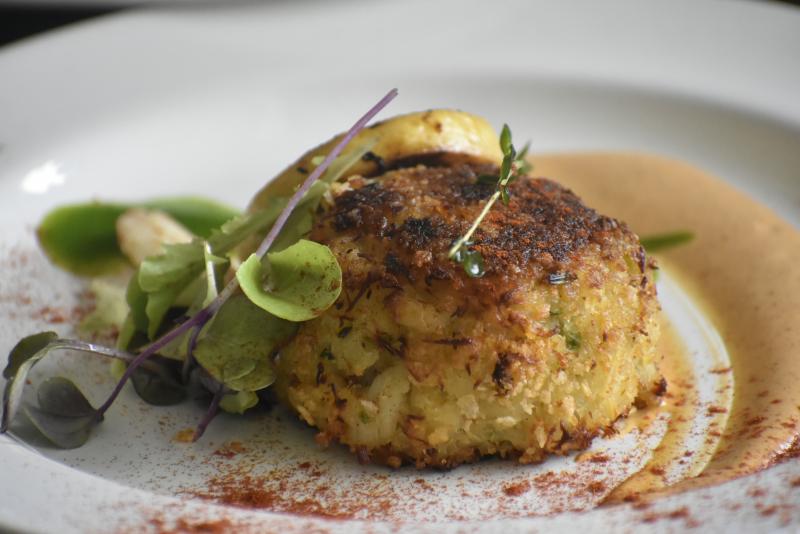/mantis-shrimp-larvae-d3f2afa2a84e46c1bf2bc071a6b2f57d.jpg)
The mantis shrimp is a colorful marine creature with a frightening left hook. And also a forceful right hook.
This crustacean has the most powerful punch in the animal kingdom. They can whip out one of their club-like front legs at speeds of up to 75 feet/second from a standing start. And a new study finds that shrimp larvae learn these lethal strikes not long after birth.
The adult mantis shrimp delivers those mighty blows in order to feed or to fight. They’ll strike out to stun or kill crabs, mollusks, or other prey. But they’ll also use their appendages as weapons to fight with other mantis shrimp over food or burrows.
“They are able to produce such amazing speeds with the help of springs and latches,” Jacob Harrison, a Ph.D. candidate in biology at Duke University and lead author of the study, explains to Treehugger. “Much like a bow and arrow, these shrimp can store elastic energy into spring-like elements in their appendage by bending elements of their exoskeleton. They can then release that stored potential energy by disengaging a latch, the springs will return to their original shape, and propel the arm forward.”
Researchers knew how this mechanism worked, Harrison says, but they knew almost nothing about how it develops. They didn’t know how early it started in young mantis shrimp and whether it differed from the powerful systems that adult mantis shrimp have.
Studying Tiny Creatures
The team traveled to Hawaii to collect and study Philippine mantis shrimp (Gonodactylaceus falcatus). But it sure wasn't easy.
“It was quite difficult. We collected larvae by sticking lights in the water near-adult habitats and waiting for them to appear. During the later larval stages, larvae are positively phototaxic [drawn to the light], so they will come to the light like a moth to flame,” Harrison says.
But they had to sift through the net of creatures they had collected—including larval crabs, shrimp, fish, and worms—to find the mantis shrimp. They also collected eggs from a pregnant adult female mantis shrimp and raised the eggs in the lab.
“To film the strikes, I needed a special high-resolution and high-speed camera shooting at 20,000 frames per second. I also designed and built a custom rig so that I could suspend a larva in the water while keeping them in view of the camera and lens,” Harrison says. “It took over a year to troubleshoot different set-ups, but we eventually got it.”
They found that the larval mantis shrimp have a very similar striking mechanism to the adults and it develops about 9-15 days after hatching, which is in their fourth larval stage. The baby shrimp are about the size of a grain of rice (4-6 mm long) at that stage. Their appendages are only about 1 mm long.
“Although, the strike is quite quick for something so small it definitely isn't as fast as we expected. Which is interesting,” Harrison says. “It highlights there may be some interesting constraints on these systems.”
They were slower than researchers predicted, but they were still incredibly fast. To put it in perspective, the tiny shrimp accelerate their arms nearly 100 times faster than a Formula One car. But the results go against the expectation that smaller is always faster.
The results were published in the Journal of Experimental Biology.
Benefits of Being Fast
The powerful punching behavior appears to be innate and not learned, the researchers say. The larvae they raised in the lab knew how to strike and they had never been with an adult mantis shrimp.
“When you are really tiny, it is hard to build up speed. So you need to be able to accelerate really quickly. Springs let you do this in a way that muscles can't,” Harrison says. “Being fast can be really helpful if you are trying to move through fluids without too much energetic costs or capture prey before they swim away.”
“I think what was coolest though was that these larvae are transparent, so you can visualize everything working inside the appendage. That is incredibly rare and cool,” Harrison says. “Most organisms have opaque skin or shells over their muscles, but here we can see everything happening. It allows us to ask really interesting questions about biological spring-latch mechanisms that we couldn't ask before.”
The Link LonkMay 03, 2021 at 09:22PM
https://ift.tt/3gW6O0P
Baby Mantis Shrimp Throw a Killer Punch - Treehugger
https://ift.tt/3eNRKhS
shrimp

No comments:
Post a Comment